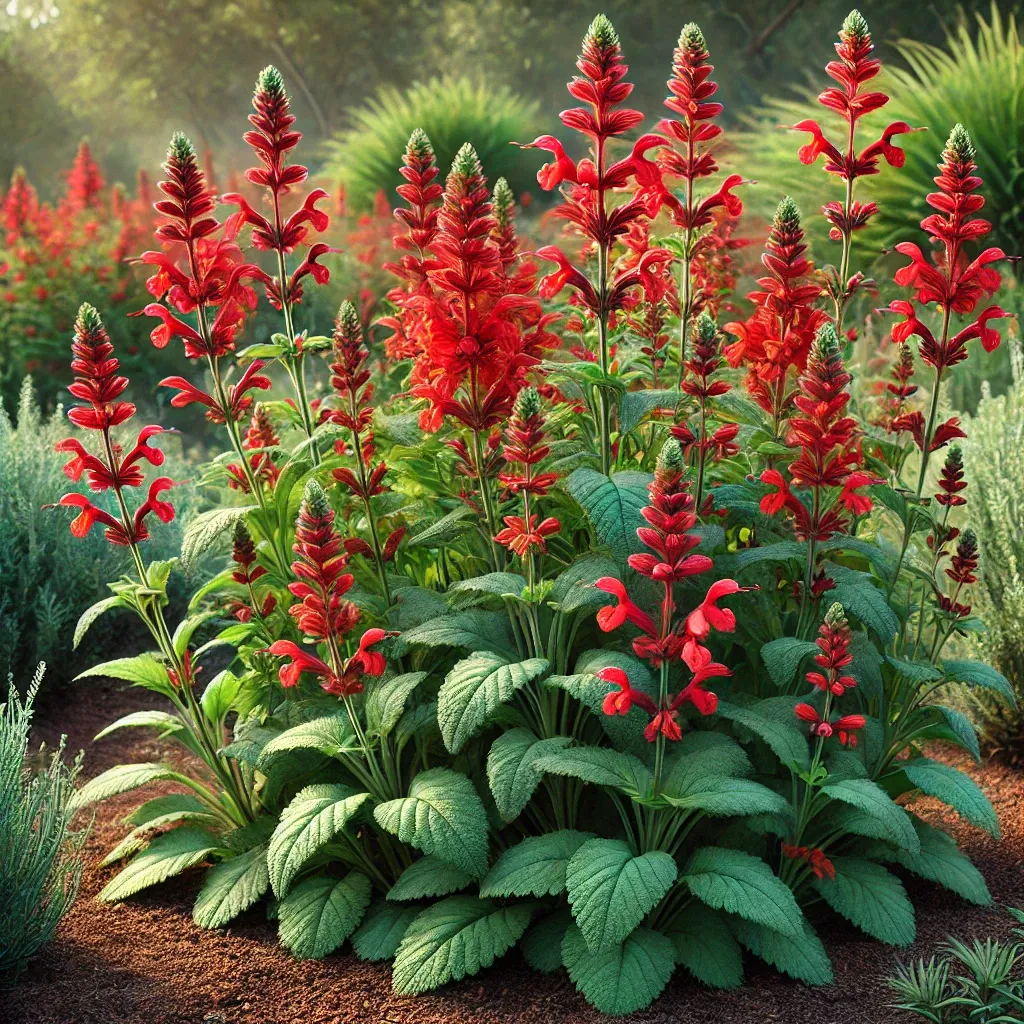Red Sage: A Potential Remedy for GERD Through LES Contraction
Introduction
Gastroesophageal reflux disease (GERD) is a common condition where acid from the stomach flows back into the esophagus, causing irritation. This backflow typically occurs due to a weakened lower esophageal sphincter (LES), the muscle responsible for keeping stomach contents from coming back up. Standard treatments often focus on reducing acid, but few directly target strengthening the LES. Recent studies suggest that Salvia miltiorrhiza, commonly known as red sage or Danshen, may help strengthen the LES by inducing contraction, providing a novel approach for GERD treatment.
Understanding GERD and Its Challenges
GERD occurs when the LES fails to close properly, allowing acid and other stomach contents to flow back into the esophagus. Common symptoms include:
- Heartburn: A burning sensation in the chest caused by acid reflux.
- Regurgitation: Sour or bitter-tasting acid backing up into the throat or mouth.
- Inflammation: Long-term acid exposure can lead to esophagitis or even esophageal cancer.
Conventional treatments like proton pump inhibitors (PPIs) focus on reducing acid production, but 10-40% of GERD patients are refractory to PPI therapy. Strengthening the LES offers a promising alternative approach, and red sage may play a key role in this.

Historical Uses
Salvia miltiorrhiza has been used for centuries in traditional Chinese medicine to improve blood circulation, treat cardiovascular diseases, and relieve symptoms of gastrointestinal disorders. While its cardiovascular benefits are well-known, emerging research indicates its potential for strengthening smooth muscles, such as the LES, which is vital for preventing acid reflux.
How Salvia miltiorrhiza Helps with GERD
- Inducing Tonic Contraction of the LES: Salvia miltiorrhiza has been shown to induce contraction of the LES, which may help prevent acid from refluxing into the esophagus.
Scientific Insight: In studies involving rats, Salvia miltiorrhiza extracts were found to produce a dose-dependent contraction of the LES, enhancing the muscle’s ability to keep the esophagus closed and prevent reflux. - Involvement of Calcium Influx: The contraction of the LES is largely regulated by calcium. Salvia miltiorrhiza appears to stimulate calcium influx into LES muscle cells, which triggers the contraction.
Scientific Insight: Research showed that Salvia miltiorrhiza-induced LES contraction was significantly inhibited when calcium was removed from the experimental environment, suggesting that calcium plays a crucial role in this process. - Potential to Strengthen LES in PPI-Refractory GERD: For patients who do not respond well to conventional treatments with proton pump inhibitors, Salvia miltiorrhiza’s ability to strengthen the LES may offer a new avenue for managing GERD symptoms.
Scientific Insight: Unlike many conventional treatments that focus solely on reducing stomach acid, Salvia miltiorrhiza targets the muscle function of the LES, making it a potentially useful remedy for PPI-refractory GERD patients.
Research Supporting Salvia miltiorrhiza's Efficacy
Clinical Study on Salvia miltiorrhiza
- Method: In a recent study, researchers examined the effects of Salvia miltiorrhiza extracts on the LES in rats. LES muscle strips were treated with various doses of the extract, and contractions were measured.
- Results: Salvia miltiorrhiza caused significant tonic contraction of the LES, strengthening its ability to remain closed. This effect was shown to be dependent on calcium influx into muscle cells.
- Conclusion: The study suggests that Salvia miltiorrhiza could be an effective treatment for GERD by strengthening the LES, offering hope for patients who are not responding to conventional treatments.
How to Use Salvia miltiorrhiza for GERD
Selecting the Right Product
- Purity Matters: Choose high-quality Salvia miltiorrhiza extracts that are standardized to ensure consistent dosage and potency.
- Content Caution: Ensure the product has been tested for contaminants and follows quality assurance guidelines.
Dosage Guidelines
- Starting Dose: Consult with a healthcare professional to determine the appropriate dosage for Salvia miltiorrhiza, as human studies are still limited.
- Frequency: Typically, supplements are taken once or twice daily, but this may vary depending on individual needs.
- Monitoring: Track changes in GERD symptoms and adjust dosage as needed with guidance from a healthcare provider.
Preparation Tips
- Capsules and Tablets: These forms offer a convenient and accurate way to consume Salvia miltiorrhiza extracts.
- Herbal Teas: Salvia miltiorrhiza can also be consumed as a tea by steeping the roots, though this may provide less precise dosing.
Precautions and Considerations
Potential Side Effects
- Digestive Effects: Salvia miltiorrhiza is generally well tolerated, but some individuals may experience mild digestive upset.
- Allergic Reactions: Rare but possible; discontinue use if symptoms such as rash, itching, or swelling occur.
Interactions with Medications
- Blood Thinners: Salvia miltiorrhiza may interact with blood-thinning medications. Consult your doctor before use if you are on anticoagulants.
- Blood Pressure Medications: The herb may also affect blood pressure levels, so caution is advised for those on medication to lower blood pressure.
Incorporating Salvia miltiorrhiza into a GERD Management Plan
Lifestyle Modifications
- Dietary Changes: Avoid trigger foods and beverages such as spicy foods, caffeine, and alcohol to reduce GERD symptoms.
- Eating Habits: Eat smaller, more frequent meals to decrease pressure on the LES.
- Posture: Stay upright for at least two hours after meals to prevent reflux.
Complementary Approaches
- Stress Management: Techniques like deep breathing, meditation, and yoga can help reduce GERD symptoms by calming the digestive system.
- Weight Management: Maintaining a healthy weight reduces abdominal pressure and helps prevent acid reflux.
Reference
Learn more about the study on Salvia miltiorrhiza's effects on LES contraction here.
